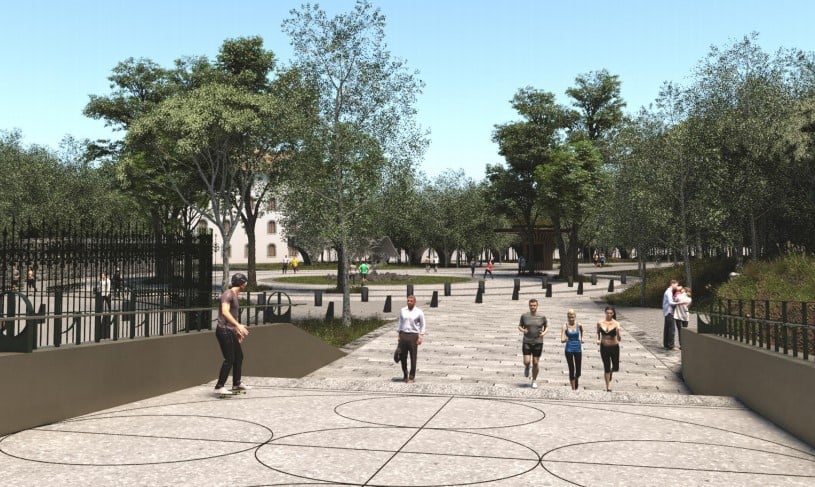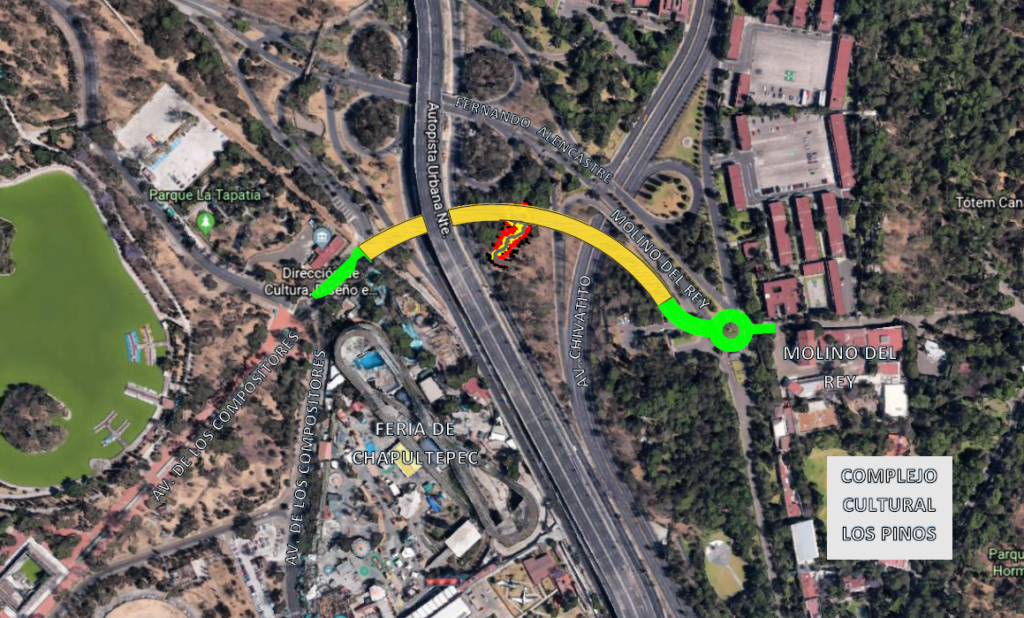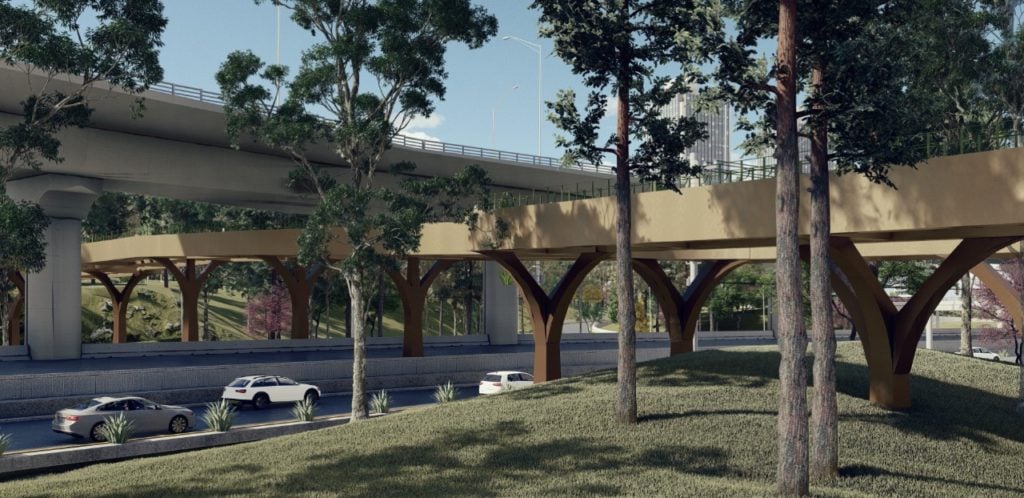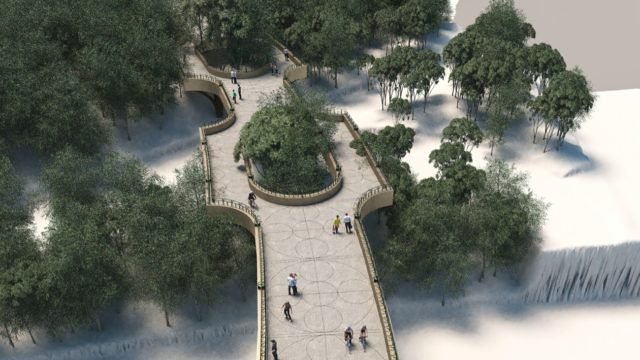This week begins the construction of the first floating road in Chapultepec, which has an investment of 187 million pesos and will be ready in 2022.
One year later than planned, this week the construction of the first floating causeway of the Bosque de Chapultepec begins, a pedestrian bridge that will interconnect the first and second sections. The work will have the stamp of the artist Gabriel Orozco, who, commissioned by President Andrés Manuel López Obrador, coordinates the works of the Bosque de Chapultepec Cultural Complex.
The delay in the work was due to the fact that the conceptual project was adjusted to the requirements of the Ministry of the Environment to reduce the environmental impact of the bridge. In fact, that was the reason why the renowned architect Benjamin Romano, who designed the first architectural proposal for the floating causeway, decided to separate from the project.
Romano proposed a bridge 16 meters wide, which implied a greater environmental impact due to the demolition and pruning of trees that the design required. After the architect withdrew his proposal, the city government’s Ministry of Works remade the project almost in its entirety and reduced the width to eight meters, thereby minimizing the felling of trees and the shadow projected on the green area. .

As part of this redesign, the characteristic circles of the work of Gabriel Orozco, one of the most internationally valued contemporary Mexican artists, will be stamped into the concrete where pedestrians will walk. The Secretary of Works, José Antonio Esteva, compared this intervention with the murals that Diego Rivera painted in the Cárcamo de Dolores, in the second section of the Bosque de Chapultepec.

The line of the floating road is from Molino del Rey, in the area of the Los Pinos Cultural Complex in the first section of the forest, at the junction of Avenida Compositores with Kiosko, in the vicinity of what will become Aztlán, the urban park that will replace to La Feria de Chapultepec and which will open its doors in November with an offering and later with attractions in 2022 and 2023.
The construction of the floating road is in charge of the company Fredel Engineering and Architecture. The amount of the contract is for 186 million 999 thousand 240.17 pesos and it is estimated that it will be concluded in the first quarter of next year. The previous deadline was set from July 2020 to May 2021, but it was postponed because the project had to be redone after Romano’s departure.

At the same time, the executive project and subsequent construction of the second pedestrian lane will be drawn up, the outline of which will be the ecological parking lot located behind the National Auditorium, in the first section of the forest, at the junction of Avenida de los Compositores and Fernando Alencastre, on the second section.
As environmental compensation for the construction of the pedestrian and bicycle bridge, 474 trees of three, four and five meters in height will be restored, which must have a two-year maintenance program. The first 50 specimens were planted in the Rosario Castellanos Park and in El Sope, both spaces in the second section of the forest.
According to the environmental studies carried out in the zone of influence of the floating road, there are 664 trees, of which 456 remain unaffected by the work, 115 will be transplanted, 79 will be felled because they are dead or in severe decline, and 14 they will be pruned, the Ministry of the Environment reported at a press conference on Wednesday.

Asked about the works to interconnect the third with the new fourth section of the forest, which were also conceptual proposals by the architect Benjamin Romano, the secretary Esteva Medina pointed out that there are still no conceptual proposals, which will be worked on later.
He also pointed out that to date there are 16 work fronts related to the Chapultepec Cultural Complex project, including the rehabilitation of the ruins of the El Rollo and Atlantis water parks in the new Urban Culture Park, the Clausell and Paso del Conejo (all in the third section), the construction of the Cineteca in the fourth section and renovations and interconnections of the existing museums in the three sections of the forest.
As for the vehicular overpasses that were projected for Constituent Avenue, from Parque Lira to the College of Architects, they were discarded and instead another intervention will be carried out focused on integrating the neighborhoods surrounding the forest, as occurs in the western part, where Polanco is integrated with the first and second sections.
Source: forbes.com.mx






